Within the Mediterranean Sea, the Posidonia Oceanica represents one of the most spreadseagrass species. In the past decade, as a result of human activities and constant changes occurring in the maritime ecosystem, the Posidonia population recorded a fast and high decrease of the species. With the absence of the seagrass, many other dependent species have indicated lower population statistics.
The project aims to preserve Posidonia through the use of a planting and monitoring system. This will be achieved by simulating an environment through an artificial network of underwater and surface systems that exchange information and resources. This metabolic relation will be possible via a human interaction process with the collecting elements of the device in order to produce and implant nutrients and biorock within the sea bed.
By repopulating Posidonia, the project aspires to trigger and generate a further development of the sea-based fauna and flora, and therefore re-build the natural maritime ecosystem.
SITE CONTEXT
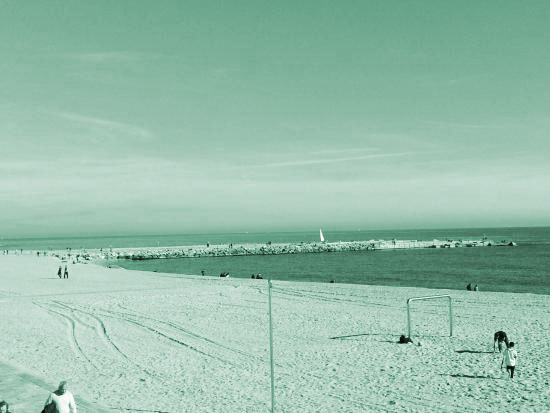
Bogatell Beach
Barcelona waterfront has always been a maritime trade and a water dump where the agricultors throw away all the trash. So many years later, people turned this place into a desirable one when the Olympic Games invested hundred of millions to build and renew all Barcelona and specifically, the beach.
Thank to this investment, Bogatell beach was built. This artificial beach has turned into a new milestone for the city in terms of leisure and for taking a bath. Nevertheless, the artificiality and the human interaction are destroying our beaches, looking for an ecosystem recoversion.
ISSUES FOR THE POSIDONIA AND RESPONSE
First we mapped the various issues we would face while developing the prototype vs. how we can respond to them


METABOLIC DIAGRAM
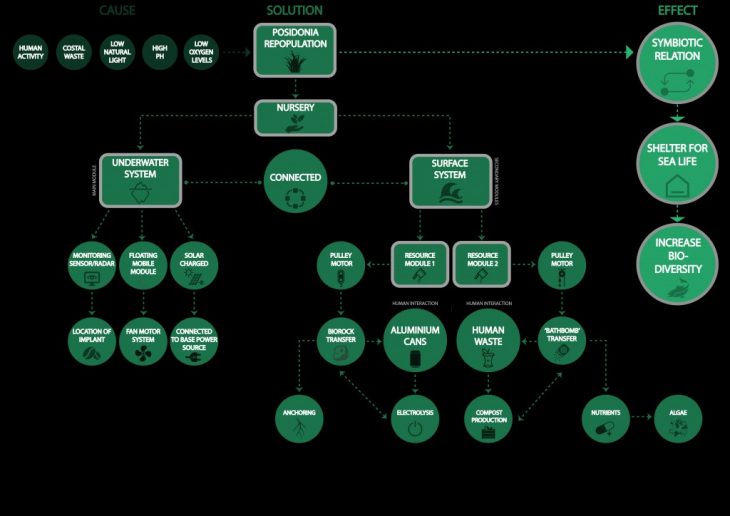
The metabolic diagram aims to cover all factors that would favour a sustainable environment for the growth of Posidonia. It starts from human interaction to the mechanical functions of resource providing to the actual chemical reactions between the resources and the sea water to create nutrients for the meadows.
PROTOTYPE DEVELOPMENT

FINAL OUTCOME

The final model was to encompass the given functions so as to be a wholesome monitoring and providing system for the meadows.
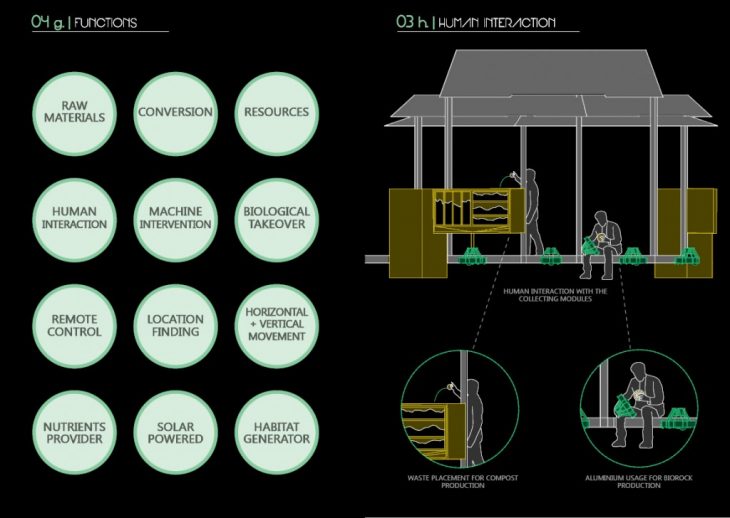
The floating prototype docks itself onto a pavilion on the beach from which it collects it’s resources- nutrients and biorock. People are invited to come to the pavilion for social gatherings and throw their waste into the designated boxes which will in turn convert the waste into usable nutrition and biorock for the posidonia.
FUNCTIONS
SENSOR/ RADAR
The prototype picks up the location of the posidonia from the sensors placed in the ocean bed.
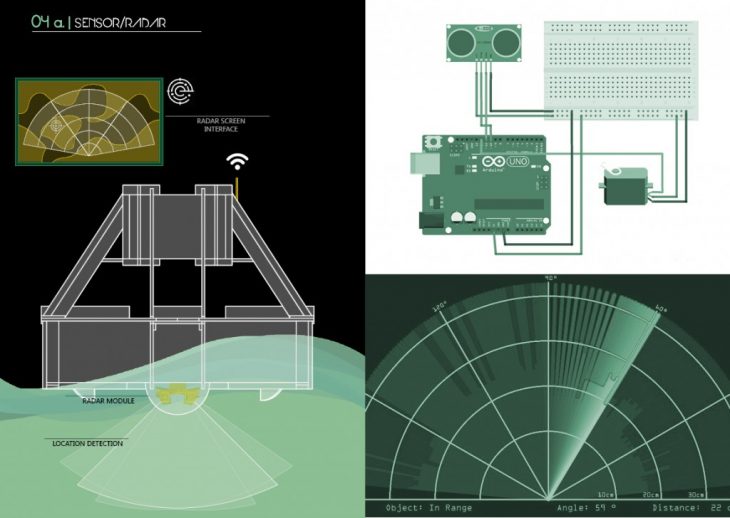
MOBILITY AND RESOURCE PROVIDING
The prototype then procedes to move via remote control after it has collected the resources from the pavilion
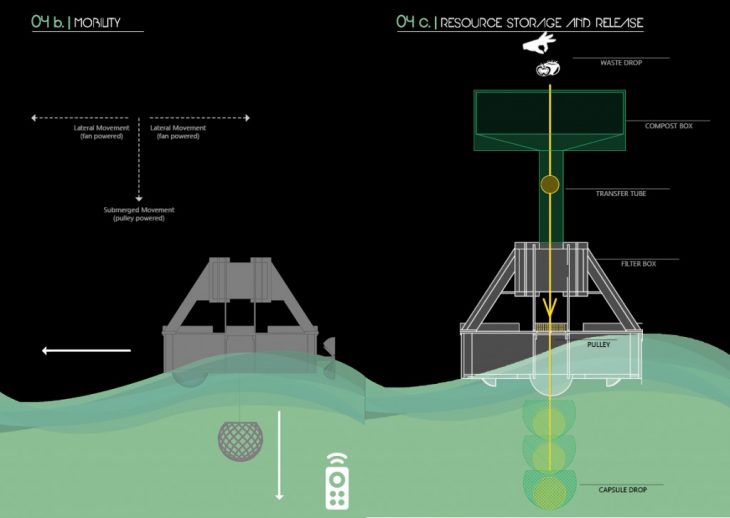
SOURCE OF ENERGY AND BIOROCK PRODUCTION
The prototype is powered by solar energy at the pavilion. The biorock is a calcerous material that is produced by electrolysis of aluminium suspended in sea water mixed with calcium and potassium. They act as artificial coral that provide a base for algae to grow. The algae oxygenate the water for the posidonia.
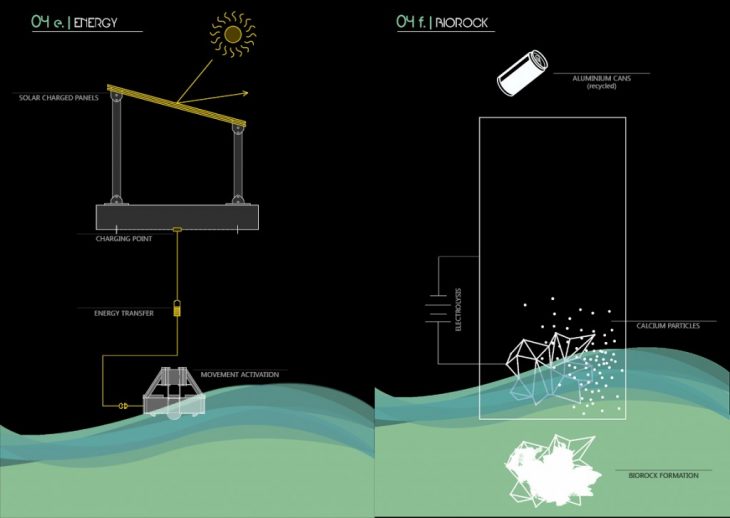
FINAL PROPOSAL
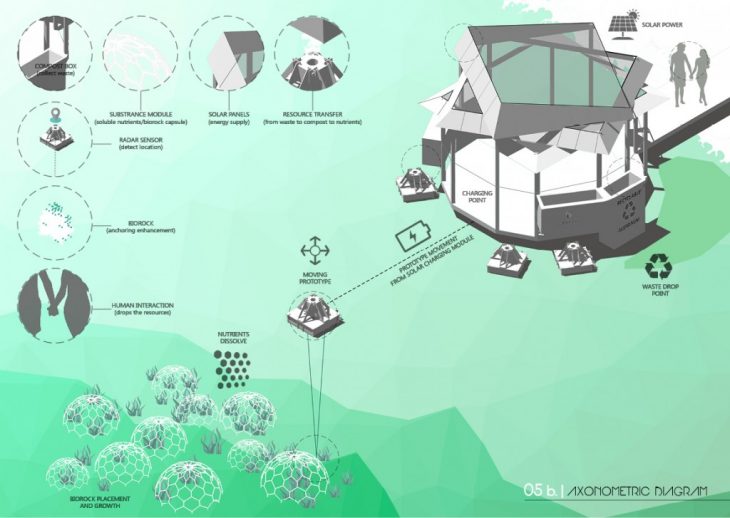
FUTURE VISIONS


FINISHED PRODUCT
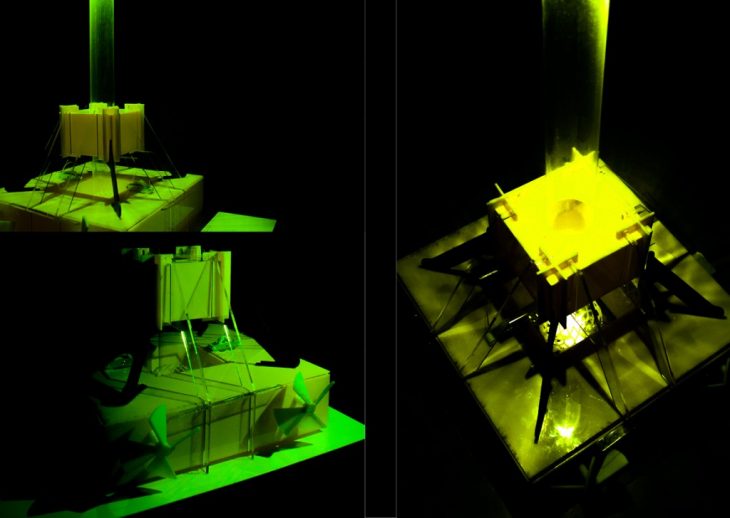
Yellow Submarine is a project of IaaC, Institute for Advanced Architecture of Catalonia
developed at Master in Advanced Architecture, in 2018-19 by:
Students: Daria Ciobanu-Enescu, Ankita Alessandra Bob, Jose Isidro Pastor Tormo, Mohamad Fouad Hanifa
Faculty: Javier Pena, Oriol Carrasco, Nikol Kirova